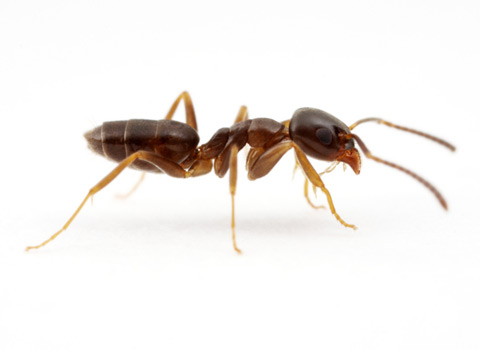Despite their ability to sting you, these stinging insects are very different.
Unfortunately, flying stinging insects seem to be having a moment at present (murder hornets, anyone?). It is also prime time for these insects to pursue flowers and backyard barbecues, making the chances of encountering a bee, wasp, or hornet very high during the warmer weather.
Even though they are all capable of stinging you, bees, wasps, and hornets are pretty different. In a perfect world, you would go through life never having to encounter one. In reality, you will most likely cross paths with one or all of these pests on Long Island.
Here is how to tell bees, wasps, and hornets apart—from their appearance to their habitat to their stinging power—so you know what you are dealing with if you happen to come across one.
Bees
You probably know a bee when you see one, but it can be challenging to differentiate between it and a wasp or hornet.
What are the most common bee species on Long Island?
The most common types of bees you are likely to come across on Long Island are honey bees, carpenter bees, and bumblebees. Long Island homeowners may encounter solitary ground-nesting bees during the spring.
What do bees look like?
Bumblebees and carpenter bees are burly insects that are rounder in shape and usually black and yellow in color. Honey bees are banded orange and black in color but also hairy in appearance. Honey bees are likely the most common type of bee you will encounter on long island, New York. Bees commonly range in size from a quarter of an inch to an inch in length.
Where can you find bees?
It depends on what kind of bee you are looking for. Honey bees usually construct hives in hollow trees, while bumblebees will commonly nest in abandoned rodent burrows. Carpenter bees build their nests in wood, including partially decayed trees or structural timber. Honey bees, carpenter bees, and bumblebees can all be seen on flowers foraging for nectar.
Can bees hurt you?
Most bees can sting, resulting in immediate pain and a localized reaction of mild swelling, redness, and itching at the sting site. However, for people with allergies to bee stings, even one sting can be life-threatening.
Honey bees die after they sting a person, and ground-nesting bees are not aggressive, so the chances of being stung by one are low.
Wasps
Wasps and hornets are not the same. A hornet is a type of wasp. The main difference between hornets and wasps, such as paper wasps and bald-faced hornets, is size, with hornets being more robust and larger. Additionally, hornets are social insects, whereas wasps can be social or solitary, depending on the species.
What are the most common wasp species on Long Island, New York?
Paper wasps and yellow jackets are the most common wasp species found on Long Island.
What do wasps look like?
Wasps have a narrow, pinched waist and are black or have various white, orange, or yellow markings. Unlike bees, wasps do not have a great deal of hair. Wasps range in size from a half-inch to an inch in length.
Where can you find wasps?
Wasps construct their nests in the eaves, and bushes, along fences, and inside the walls and ceilings of Long Island homes. Paper wasp nests resemble upside-down umbrellas, while yellow jackets typically build their nests in the ground. Wasps are predators, so they like meat, and they also like sweets. Yellowjackets are often the uninvited guest at barbecues foraging for meat and sugary drinks, such as soda.
Can wasps hurt you?
Yes, and when threatened, a wasp can sting you multiple times.
People are usually stung by wasps when they get too close to a wasp nest. Like bees, if you are allergic to wasp venom, getting stung by a wasp can trigger a severe allergic reaction.
Hornets
Hornets, including bald-faced hornets and European hornets, are the largest of the stinging insects found on Long Island. Here's what you need to know about them.
What are the most common hornet species in the United States?
The European hornet, a.k.a. the brown hornet or giant hornet, is the primary type of hornet found in the U.S.
What do hornets look like?
European hornets are large and reddish-brown with yellow stripes on their abdomen. Bald-faced hornets, on the other hand, are primarily black with a white pattern on their head, giving them a bald appearance.
Where can you find hornets on Long Island?
It depends on the type of hornet that you are looking for. European hornets generally construct their nests in hollow trees and barns. Bald-faced hornet's nests can be found suspended on tree branches, in a shrub, on a utility pole, or on the soffit of a Long Island residence.
Can hornets hurt you?
Yes, and they can repeatedly sting, resulting in severe pain and injury. An allergic reaction to the insect's venom could potentially be life-threatening.




